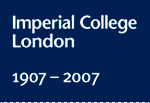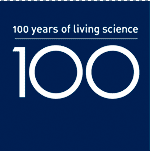John Sanderson and Jeffrey Greenleaf
(Physics, 1062; Physics, 1952)
remember the time when there were 2,700 men and only 100 women at Imperial
Interviewer: You met here? You were friends at the time?
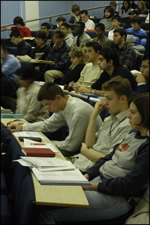 John Sanderson At the time yes. It was an unusual situation. It was a time when national service had just finished and I'd done national service and no one else had so I was two years older than everybody else. So, I was in charge of entertainments, which meant I didn't do very much work at all, did I, which was great. The other thing we were saying earlier was the size of the lecture theatres. In the first year, there were 110, 120 of us but the second year lecture theatre only held 90. So, we knew very well the pressure was on, 30 of us had to get the chop. But when we came to the second year the brand new physics building was opened and then we had a 150 places. So, we all stayed, luckily otherwise I would have left after year one.
John Sanderson At the time yes. It was an unusual situation. It was a time when national service had just finished and I'd done national service and no one else had so I was two years older than everybody else. So, I was in charge of entertainments, which meant I didn't do very much work at all, did I, which was great. The other thing we were saying earlier was the size of the lecture theatres. In the first year, there were 110, 120 of us but the second year lecture theatre only held 90. So, we knew very well the pressure was on, 30 of us had to get the chop. But when we came to the second year the brand new physics building was opened and then we had a 150 places. So, we all stayed, luckily otherwise I would have left after year one.
Jeffrey Greenleaf I think that was one of the things I noticed. I actually went to another university, I started in 1959 and I went to Imperial, got my degree, then went to Manchester and I left Manchester in 1969 so, I saw several generations of students. When I first came here there were quite a high proportion of people in the university who had done national service before and I was aware that there were these people who were 18 months to three years older than you and it actually put a different ethos on the whole college. There was a very big jump in the next year, 1960, when that intake was entirely straight from school. People didn't do gap years in those days.
JS Yes, that's right, yes. They were very young people.
JG And suddenly, it changed from a time when lot of people wore college blazers and ties and came in grey flannels and looked very formal. Then we entered into the 60s and suddenly undergraduates were liberated, they'd not done national service and it changed very much. It went through another couple of different generations in the 1960s as we got through the Beatles era and the hippy movement and, very noticeable changes.
JS Lots of free love if I remember rightly. I wasn't there of course, I didn't know about that.
Interviewer: So, you enjoyed these…
JS Well, no because in those days there were 3,000 students at Imperial.
JG There were 2,800 at Imperial. I remember that number because I think it was in 1960, the union realised that they'd got 100 women in the Imperial.
JS For the very first time.
JG And they put the union college flag up.
JS That's right.
JG So, there was 2,700 men and 100 women.
JS So, it wasn't much fun. And I can remember clearly thinking, I'll go to Bedford College to the dance there, to find a girl and when I got there it was empty because all the girls were at Imperial.
JG Because they were all scientists, predominantly male, it was somewhat unbalanced then, and I think with the introduction of medicine and management courses and more balanced male female it's a much healthier environment now.
JS Much, the girls are much nicer, aren't you, yes?
Interviewer: And what did you do to, what a bunch of males like you did do to enjoy yourselves?
JS Oh, we had lots of functions. The college in those days had Morphy Day when we went down to the towpath at Putney, pushed a great big ball in the mud and had a boat race. We had the smoking concert where there was free beer for the evening for all the students and we had a review which we put on, we did a couple of acts in it which was quite fun really. It's before Beyond the Fringe. We got there first really but we kept it under a bush.
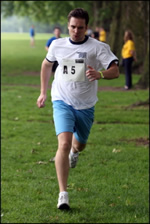 JG There was a lot of focus on sport. I used to do cross country here and we had a very strong running club here and a lot of strong folks. I think that's continued with Hyde Park road relay that's still going strong.
JG There was a lot of focus on sport. I used to do cross country here and we had a very strong running club here and a lot of strong folks. I think that's continued with Hyde Park road relay that's still going strong.
Interviewer: What is this?
JS President of Royal College of Science association. When the college, well, the college was formed in 1890, I believe, but when Imperial College was first coagulated from the three constituent colleges they tried to rub them out and they formed a society, the Royal College of Science Association to protect the Royal College of Science name. And we've protected that for the last 95 years except that a few years ago, somebody rubbed out the Royal College of Science and now we've lost it.
JG The other thing I remember is the south side hadn't been built when we were there. I think the only accommodation was in the quadrangle and was in Weeks Hall
JS Weeks Hall, it was a new one, brand new.
JG In Princes Gardens and so, nearly everybody in the university lived in digs or accommodation outside beyond Chelsea and Kensington but right up Hammersmith, Barnes, and Putney, that area. So, a long way out and they used to talk about the brown baggers who would disappear down the tube at five o'clock every evening and they wouldn't come back to the university until the next morning, so there was very little corporate college life here in the evenings. And if you came into the union at the evening, unless there was a big function on, there would be less than a dozen people.
JS And of course, girls weren't allowed into the bar in those days. It was a male only bar, if I remember rightly.
JG Yes.
Interviewer: What is the point of going to a bar, a male bar?
JS Well, it's macho, that's what we came to college for, to drink with one another.
JG So, things have changed for the better.
Filming by Barbara Axt Portella.
© 2007 Imperial College London
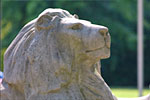
Through the first decade of the twenty-first century the campaign seeks to philanthropically raise £207 million from Imperial’s alumni, staff and friends, and donations from charitable foundations and industry.
Where your support can make a differenceGive now
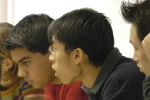
Imperial’s Centenary Year provides an opportunity to recognise and celebrate members of the Imperial community.
View staff and student portraits